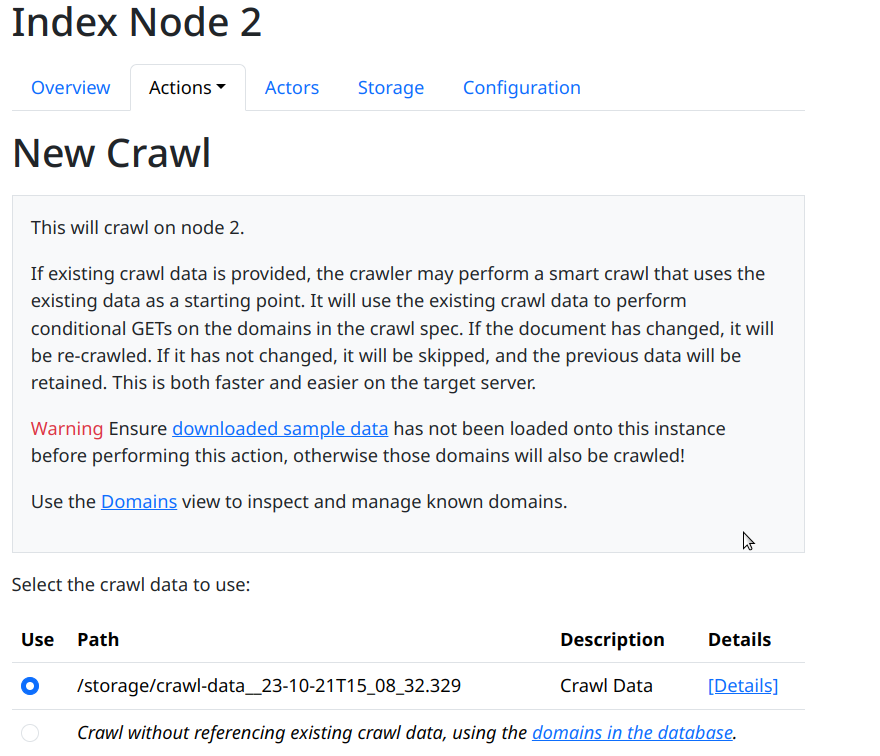2.1 New Crawl
NOTE: Please be sure to read the crawling disclaimer before proceeding.
While a running search engine can use the link database to figure out which websites to visit, a clean system does not know of any links. To bootstrap a crawl, a crawl specification needs to be created to seed the domain database.
Go to Nodes->Node N->Actions->New Crawl, and you should see a page like this:

Click the link that says ‘New Spec’ to arrive at a form for creating a new specification:

Fill out the form with a description and a link to a domain list. The domain list is a text file with one domain per line, with blank lines and comments starting with # ignored.
You can use github raw links for this purpose. For test purposes, you can use this link: https://downloads.marginalia.nu/domain-list-test.txt, which will create a crawl for a few
of marignalia.nu’s subdomains.
If you aren’t redirected there automatically, go back to the New Crawl page under Node N -> Actions. Your new specification should now be listed.
Check the box next to it, and click [Trigger New Crawl].

This will start the crawling process. Crawling may take a while, depending on the size of the domain list and the size of the websites.

Eventually a process bar will show up, and the crawl will start. When it reaches 100%, the crawl is done.
You can also monitor the Events Summary table on the same page to see what happened after the fact.
It is expected that the crawl will stall out toward the end of the process, this is a statistical effect since the largest websites take the longest to finish, and tend to be the ones lingering at 99% or so completion. The crawler has a timeout of 5 hours, where if no new domains are finished crawling, it will stop, to prevent crawler traps from stalling the crawl indefinitely.